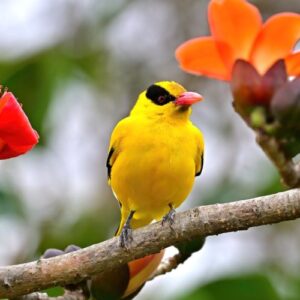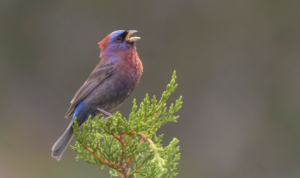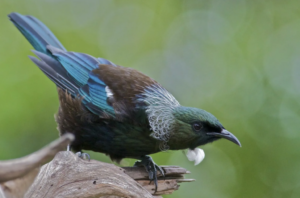This bird stands out year-round due to his unmistakable features, including a vibrant red crest that beautifully contrasts with his white and grey plumage.
Meet the Red-crested Cardinal
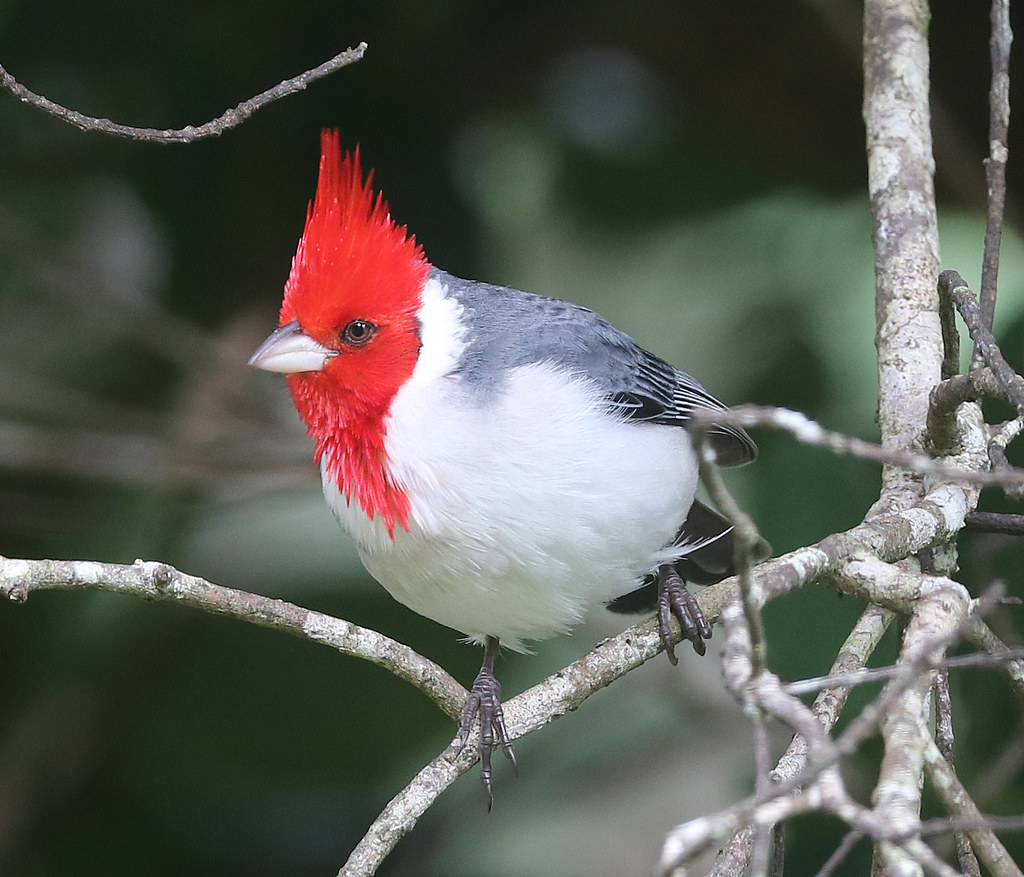
Photo Courtesy of Sloalan /Public Domain
The red-crested cardinal (Paroaria coronata), is a captivating medium-sized bird that bears a striking resemblance to its well-known relative, the Northern Cardinal. However, despite the similarities in appearance, this songbird is actually related to tanagers, a family of colorful passerine birds.
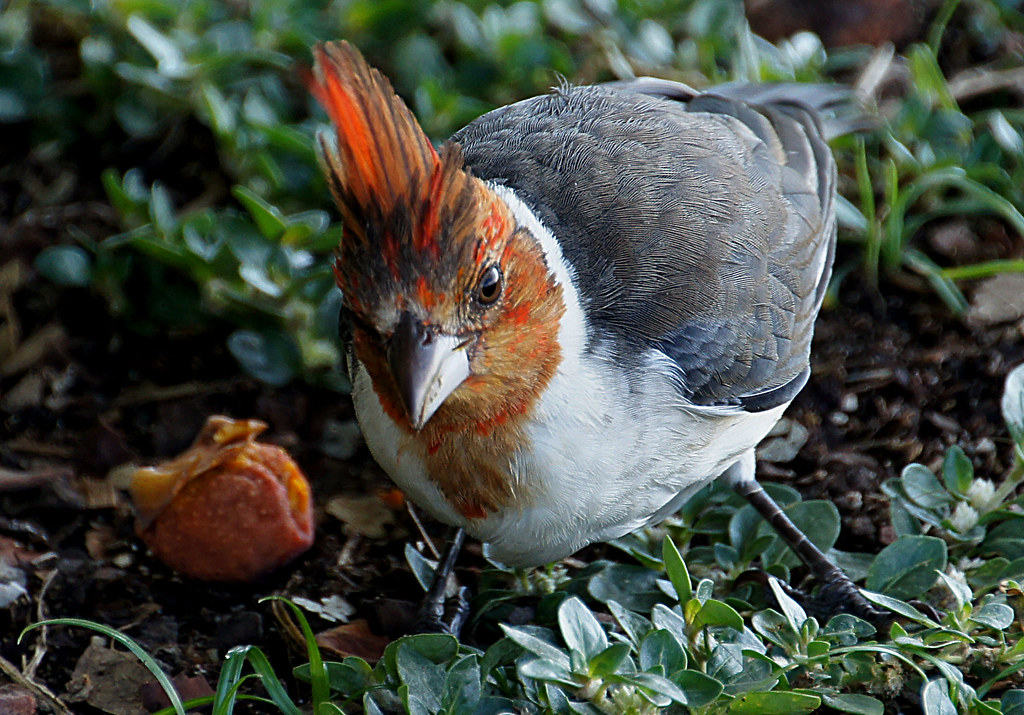
“Red-Crested Cardinal. ((Paroaria coronata))” by Bernard Spragg is marked with CC0 1.0.
The male and female red-crested cardinals are challenging to differentiate because they exhibit similar plumage. Both sexes display a vibrant red crest, complemented by a pale silver bill. Their backs are adorned with dark gray feathers, while their bellies are pure white.
To communicate with potential mates or signal alarm, they can raise or lower their crests. Additionally, this behavior can be used to intimidate intruders and make themselves appear larger.
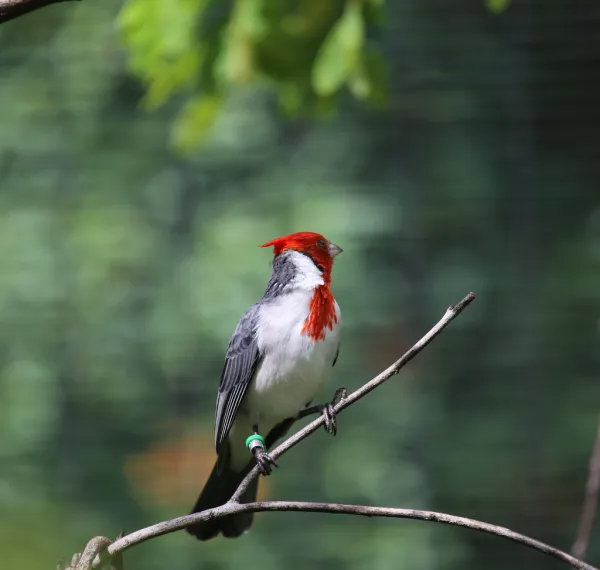
“RED-CRESTED CARDINAL” by cuatrok77 is licensed under CC BY-SA 2.0.
Native to parts of South and Central America, including Uruguay, Paraguay, southern Brazil, Bolivia, and Argentina, the red-crested cardinal has also been introduced to Puerto Rico and Hawaii, where it has established populations.
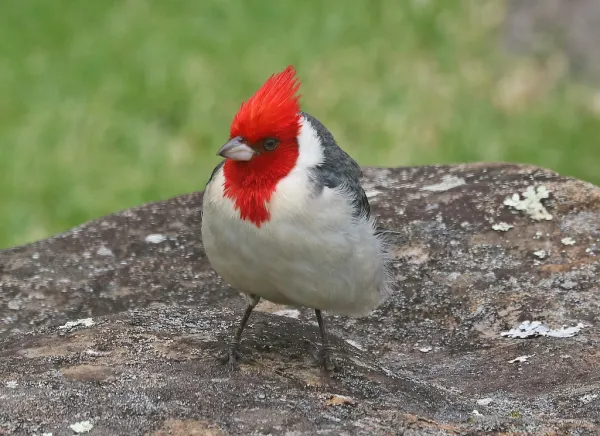
Photo Courtesy of Sloalan /Public Domain
This bird’s adaptability has allowed it to thrive in various environments, including semi-open areas with trees, shrubs, moist tropical regions, tropical savannas, and even degraded forests. It can also be found in human-inhabited areas such as agricultural lands, suburban neighborhoods, and urban settings.

“RED-CRESTED CARDINAL” by cuatrok77 is licensed under CC BY-SA 2.0.
Red-crested cardinals are diurnal birds, meaning they are active during the day. They typically live in pairs or small family groups, but during the non-breeding season, they may form larger flocks. Males become territorial and can exhibit aggressive behavior, chasing away intruders during the breeding season. In flight, they have an undulating pattern, flapping their wings in short bursts as they ascend and gliding with folded wings during the descent.
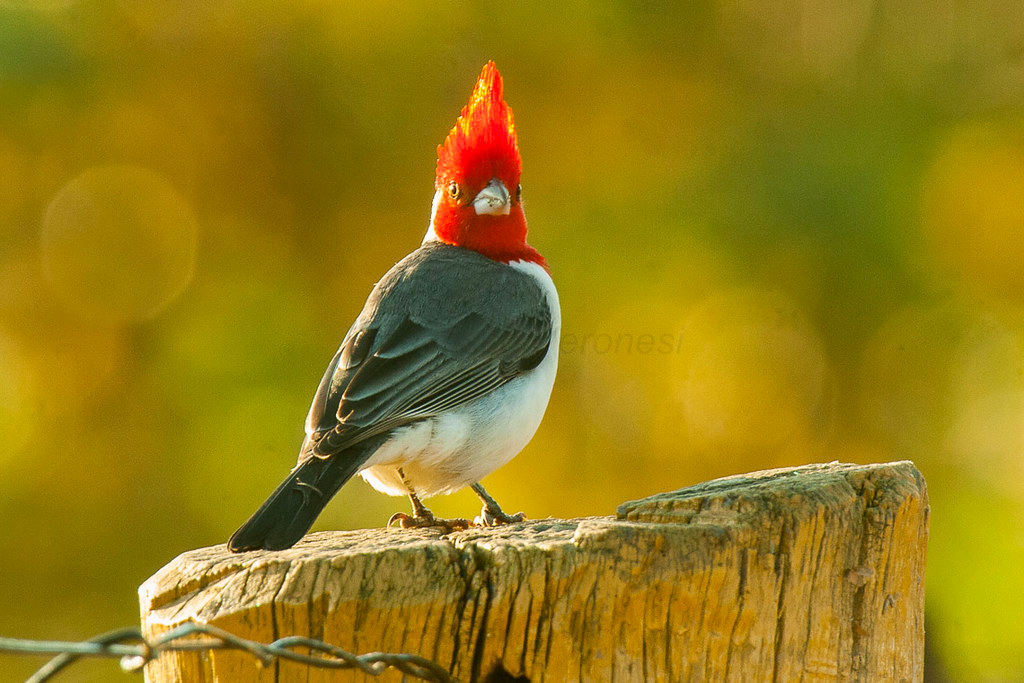
Photo Courtesy of fveronesi1 / CC BY-SA 2.0
The red-crested cardinal possesses a delightful and melodious song, consisting of a variety of whistles and chirps. Their vocalizations are often repetitive and can be heard throughout their territories. These enchanting songs add to the allure of this bird.
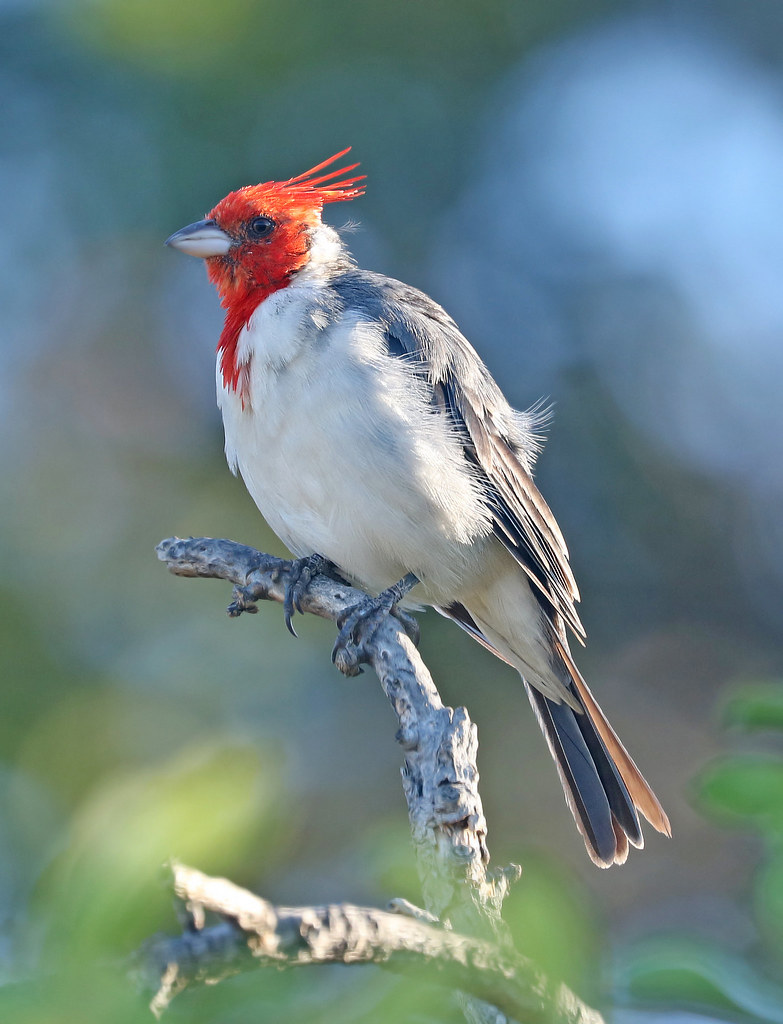
Photo Courtesy of Sloalan /Public Domain
When it comes to diet, the red-crested cardinal has an omnivorous appetite. It feeds on insects, fruits, and seeds, often foraging on the ground by hopping and searching for food. This bird’s adaptability extends to its feeding habits, as it readily explores the area around seed bird feeders.
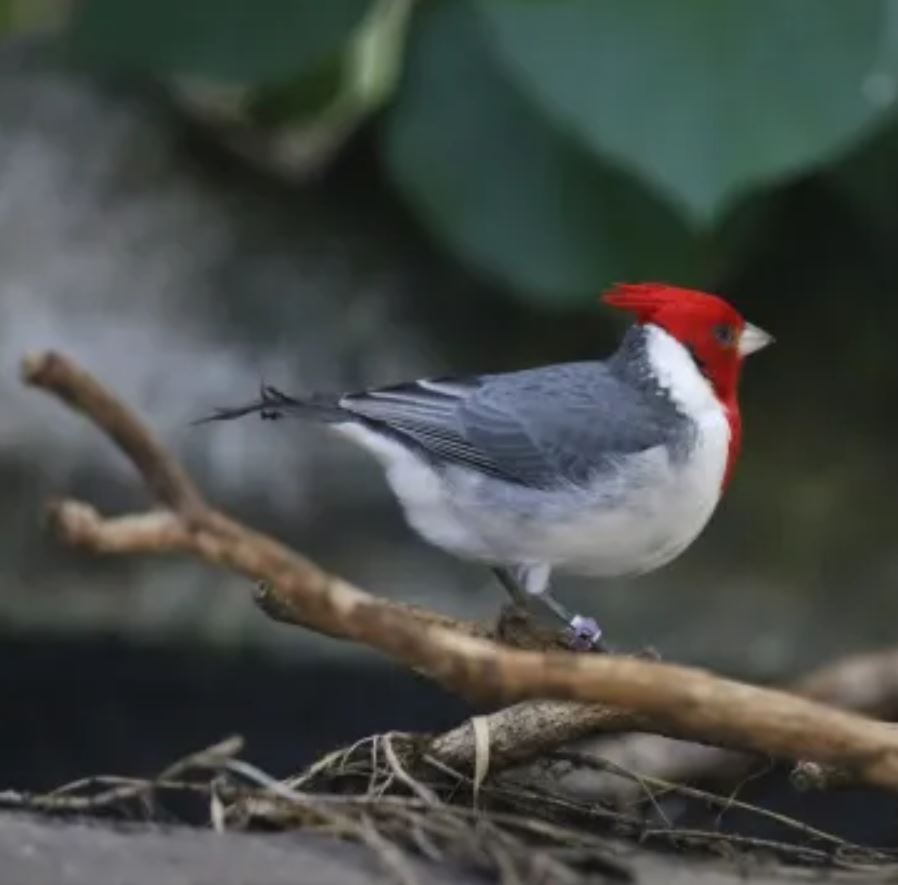
“RED-CRESTED CARDINAL” by cuatrok77 is licensed under CC BY-SA 2.0.
Breeding behaviors of the red-crested cardinal are fascinating to observe. During the breeding season, they form monogamous pairs. Even when held in captivity, they can successfully breed. Males and females engage in vocalizations and duet singing to attract each other. They engage in courtship displays by strutting, fanning their tails, and clicking their bills. Nest building is a joint effort, with both parents constructing nests using various plant materials in low shrubbery. The female lays 2 to 3 eggs that have greenish-white coloration with brown or mauve streaks. Incubation is primarily the responsibility of the female and lasts for approximately 1 to 12 days. Both parents contribute to feeding the hatchlings. The chicks fledge from the nest after 2 to 3 weeks but may remain with their parents as part of a family group for up to a year until they find mates. In some cases, a second brood may be raised.
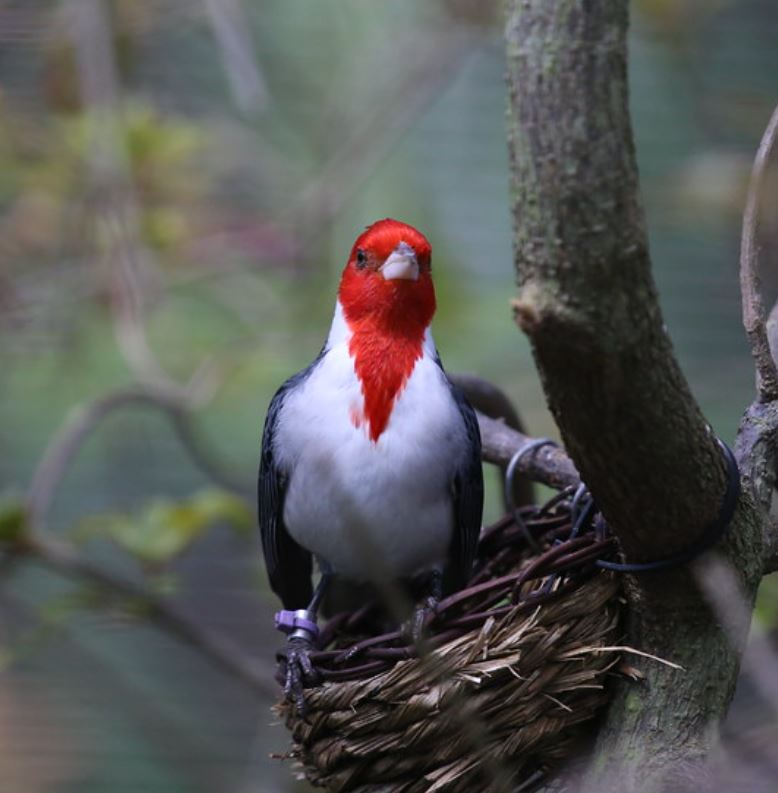 “RED-CRESTED CARDINAL” (cropped) by cuatrok77 is licensed under CC BY-SA 2.0.
“RED-CRESTED CARDINAL” (cropped) by cuatrok77 is licensed under CC BY-SA 2.0.
Unlike many migratory birds, the red-crested cardinal does not undertake long-distance migrations. It tends to reside in warm areas year-round, which may explain its sedentary behavior.
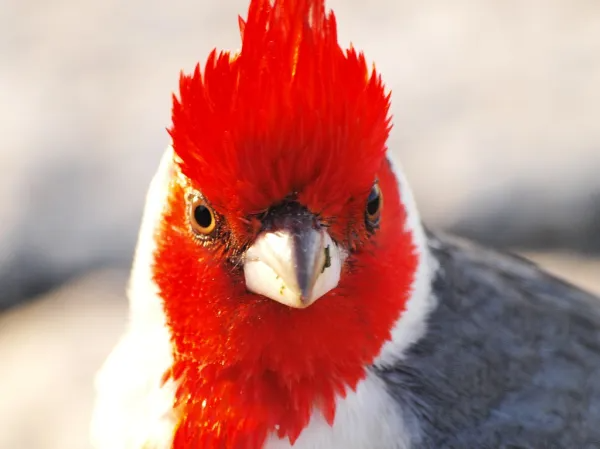
“Red-crested Cardinal: Closeup” by ~Shanth is licensed under CC BY-SA 2.0.
In terms of conservation status, the red-crested cardinal is currently listed as “least concern.” Its population is considered stable, thanks to its large range and adaptability. However, like many bird species, it faces threats such as habitat loss, bird poaching, and the impact of domestication.

“Red-crested Cardinal: Closeup” by ~Shanth is licensed under CC BY-SA 2.0.
Watch this bird below:
https://youtube.com/watch?v=sahPvXTOMuU%3Ffeature%3Doembed
This article uses material from Wikipedia.org which is licensed under the GNU Free Documentation License via Copyright Wikipedia. Images on this page are the sole property of the photographers (unless marked as Public Domain). Please read the license and or contact the photographers directly before using them for any purpose. Thank you all.
A Strikingly Beautiful Multicolored Bird That Is More Common Than You Might Think!
Please SHARE this article with all your bird-loving friends and family.
Sharing Is Caring
thenewsday

